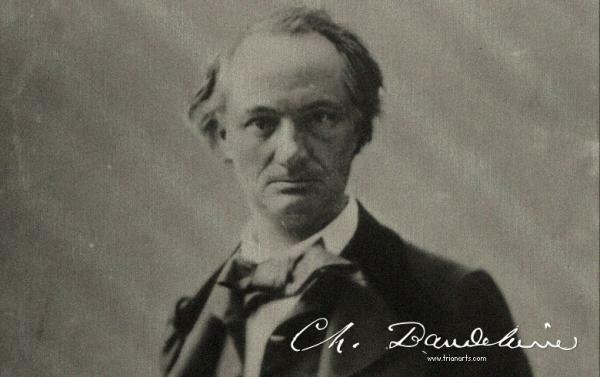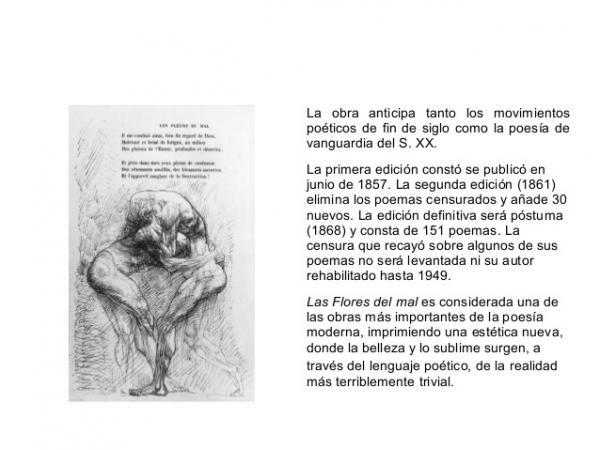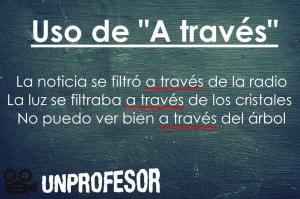SUMMARY and ANALYSIS of Baudelaire's Flowers of Evil

On April 9, 1821, what would be one of the cursed poets in France of the nineteenth century most important in the history of literature: Charles Pierre Baudelaire. He was one of the poets who made the greatest impact on French symbolism with his best known work being "The flowers of Evil", a wonderful collection of poems that brings together his poetic production since 1840 and caused a stir after its publication. The work was rated as "A hospital open to all the insanities of the spirit, to all the rottenness of the heart" and the author was forced to appear in court for the crime of offense against public morals.
In a PROFESSOR we have prepared a summary and analysis of The flowers of Evil by Baudelaire In this way, we can delve into his particular world and his aesthetic ideas and learn a little more about how to write poetry about him and him as an artist.
We begin this summary of The flowers of Evil talking about the first edition dating from the year 1857, however, the definitive edition belongs to the year
1868 since the first time it saw the light, at least six poems were censored for outrage to public morals. This latest version includes 151 poems that marked a whole model to follow for the following generations, not only for the content but also for the form, which raises novelties.The collection of poems starts from the main romantic ideas such as the search for ideal beauty, the affirmation of self and freedom, the flight from petty reality, rebellion, curse and a taste for everything morbid. However, it seems that it manages to overcome all these ideas by treating all these "forbidden" topics much more freely. It is the newest book of the 19th century for various reasons: it inaugurates the aesthetics of "correspondences" that give rise to the movement of the Symbolism and manages to arrive in an influential way until the end of the 20th century through the movement Surreal.
The collection of poems is divided into six sections, although each poem itself has a value and meaning of its own. The first poem, which serves as an introduction, is dedicated to the reader and is the one that opens the different sections: "Spleen and Ideal", "Parisian Paintings", "The wine", "The flowers of evil", "Rebellion" and finally "Death". The book, as a whole, is a search path for beauty and ideals that ends in the deepest and darkest areas of the human spirit, such as perversion, pain, uprooting or self-destruction.

Image: Slideshare
As we said, the work is divided into 6 sections. Next, in order to make this analysis of Las Flores del Mal, we are going to discover what we find in each of the sections:
- The first is the longest of all and if we analyze it we find that it presents various forms of evasion always attracted by the ideal of beauty, of art, of love... a double postulation of the poet's consciousness between the dualities, to conclude in "Boredom", in "the consciousness of evil".
- The second part is made up 18 poems where the poet contemplates the city of Paris and its inhabitants, whatever their condition, it approaches the underworld of the city. Baudelaire speaks of the main problem of the human condition: Evil.
- In the third section, there are five poems that contemplate the attempt to escape to artificial paradises, and its failure. The fourth section, which gives the book its title, is reintroduced in the immensities of evil and its different manifestations. For example: the devil, perversion or violence. In this way, he tries to extract the poetry of these evils as a resource to his boredom.
- The penultimate and fifth section is made up of three poems where the author opts for denial, blasphemy and by Satan.
- Finally, in the sixth section entitled "Death", the poet aspires to rest and rest, hoping to find a way out. He invites himself to death, to the final journey.
In this other lesson we will discover the authors of romanticism in world literature so you can meet Baudelaire's contemporaries.

Image: Slideshare
It was in the newspaper "Le Figaro" when, a few weeks after the publication of the book, they saw the light two defamatory articles on the work of Charles Baudelaire. These drew the attention of the imperial justice who ordered the confiscation of the work and summoned the author before the judge. The 20th of August Baudelaire was brought to justice for the crime of offense against public morals and he was sentenced to the fine of three hundred francs and the suppression of six of the poems of the work under the following justification: "The incriminated pieces, due to their rude and offensive realism, necessarily led to the excitement of the senses." The censored poems were: "The jewels", "Lesbos", "The Lethe", "To the one that is too happy", "Condemned women" and "The metamorphosis of the vampire".
Aware of what this public scandal meant, Baudelaire he devised an arduous defense strategy. He vindicated against all those who judged him the provocative posture of the misunderstood genius. The author insisted on the arguments of the autonomy of art, he swerved in his favor, an unfortunate circumstance. He reconstructed the speech that went against him as a favorable speech, he knew that through language he could achieve that circumstance.
Being rejected by both his family and his country led Baudelaire to the consecration through scandal. The misunderstanding of different audiences, who did not appreciate the depth of Charles's spirit Baudelaire, led him directly to the confirmation of the superiority as an artist and in the artistic value of his work. Let's say what pushed you forward was the honor of rejection towards all those thoughts that he had and nobody understood or knew how to see.


